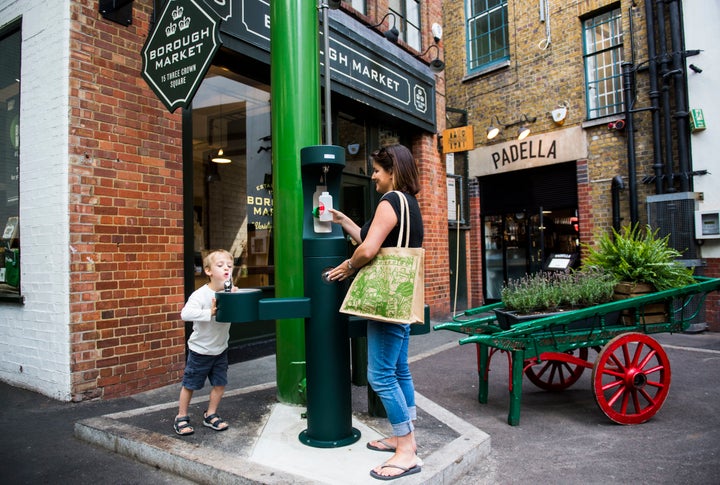
If the emotional response inspired nationwide by Blue Planet II tells us anything, it’s that the battle for hearts and minds has almost been won: as a country we are starting to understand that, for the sake of our planet and all those extraordinary sea creatures that flitted across our screens, the unfettered way in which we currently consume and dispose of plastic packaging cannot possibly continue.
One of the biggest contributors to this global problem is the single-use plastic bottle. In London alone, we consume 7.7 billion bottles of water per year, and yet our recycling rate is shamefully low—less than 50 per cent. Plastic bottles clog our landfill sites and blight our rivers. They make up 10 per cent of all litter found in the Thames. Something needs to be done, that much is clear—the question now is: what.
Here at Borough Market, we’ve already taken significant steps of our own. Ensuring that packaging used here is, wherever possible, either reusable or bio-degradable has long been a major strand of our sustainability drive. Last year, we decided that significantly reducing the use of plastic water bottles on our estate was the next hurdle we needed to clear in order to achieve this goal. But we understood that for this to be possible, we needed to provide visitors with a viable alternative.
Last summer we unveiled three new water fountains in the Market, each providing three streams of water: two to be drunk from and one to refill water bottles. At the same time, we began producing refillable bottles made from recycled plastic, which our traders are encouraged to sell on their stalls. Only then did we begin the phase-out of single-use bottles across the entire estate. Those water fountains are now in almost constant use, and our experience has been extremely positive. There are, I think, important lessons that can be learned from it.
Last weekend, Theresa May hinted that consumers might soon be charged an additional levy for every purchase of a single-use plastic bottle. She cited as inspiration the plastic bag charge, which was introduced in 2015 and has had a truly impressive impact. The money raised, she said, would be used to clean up some of the mess that has already been made.
This is a laudable idea, and definitely worth pursuing, but on its own it is not enough. A small levy will doubtless lead to a reduction in consumption, but I would be extremely surprised if it had anything like the effect of the plastic bag charge. In the supermarket, there are obvious alternatives to forking out for a bag—take your own, buy a reusable bag, or just carry your purchases in your arms—but if you’re picking up a bottle of water, it’s because either you’re thirsty right now or you’re expecting to be thirsty very soon, and alternative sources of refreshment are remarkably, and I would say obviously, scarce.
Yes, it’s entirely valid for a charge to be used to discourage purchases and to raise money to help tackle the problem, but it is essential that a significant proportion of that is invested in the development of alternatives. People need to drink water—in fact, they should be actively encouraged to drink water—so everything possible needs to be done to ensure they are given better options when it comes to doing so. Providing public water fountains like ours ought to be part of the solution, but so too should be the subsidising of new, sustainable packaging options. Given a genuine choice, our experience is that many consumers will do the right thing without complaint. The will is increasingly there; it’s the way that’s missing. That’s what the government needs to focus on: providing people with the opportunity to do the right thing.